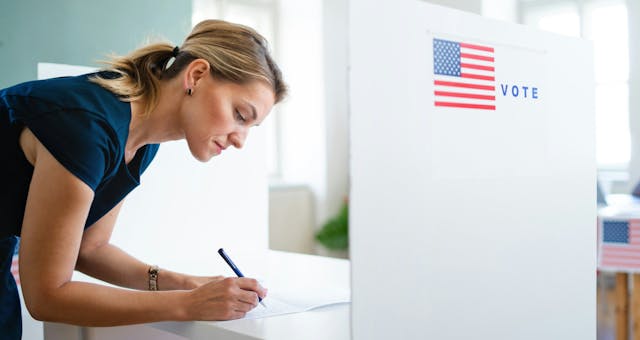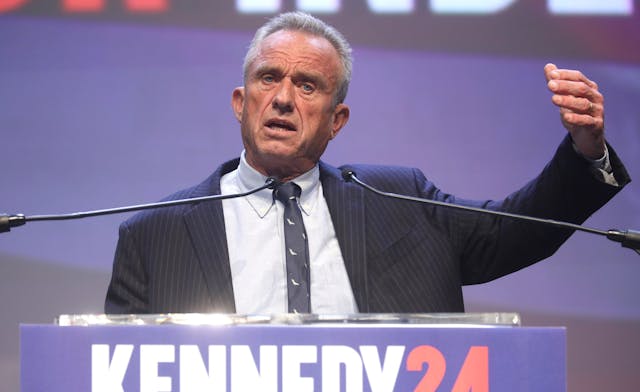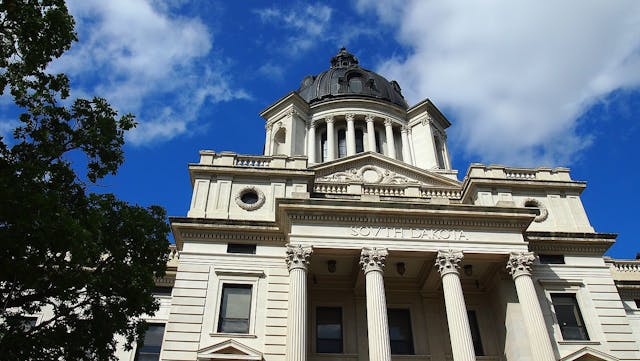Are There Benefits to Polarization in Politics?

Polarization in American politics is high among both parties and voters. This fact is hard to deny and is supported by polls and analyses of legislative behavior. What is surprising is that some have argued that there are benefits to this phenomenon.
What are these benefits, and are they as valid today as they may have been when this theory was first proposed? What can we learn about the current political environment by looking at polarization from the perspective that it is a good thing rather than something to eradicate?Over 60 years ago, a task force of the American Political Science Association (APSA) published a report, titled Toward a More Responsible Two-Party System. The report suggested that democracy would be better served by a stronger two-party system, comprised of a majority party that can carry out its policy agenda, balanced by an opposition party to maintain accountability. Put simply, greater polarization was the recommendation.
The call for a strong opposition party can be dated back to James Madison, who fought for this at a time when political parties were even less esteemed than they are today. According to Lynn Cheney, author of James Madison: A Life Reconsidered:
“Madison’s conviction that we can challenge those in power without being subversive of the nation has kept us going ever since—though not perfectly, to be sure.”
The existence of a party which challenges those in power is clearly not synonymous with polarization. But is extreme opposition at the root of the polarization that exists today? And will the resulting divisiveness be the downfall of democracy or can we channel it to evolve to an even higher place?
In 2010, political scholar Alan Abramowitz wrote The Disappearing Center: Engaged Citizens, Polarization and American Democracy. In his book, Abramowitz traces modern polarization to the 1950 APSA effort to strengthen the two parties. But, “be careful what you wish for,” Abramowitz reflects as we now decry the current state of affairs.
As the theory goes, polarization is not inherently a bad thing.
Political engagement is essential to the democratic process. Abramowitz argues that those most engaged are the most likely to be polarized. He cites evidence that during both the 2004 and 2008 elections, voters were energized by the polarized choices. Higher voter turnout and involvement in campaign activities were the result.
Popular opinion suggests that many voters have responded to gridlock and congressional ineffectiveness by becoming more disenfranchised. But Abramowitz maintains that the opposite has been true: voters have become more engaged, more involved, more likely to be informed, and more apt to take a stand on policy issues.
To some extent, the sharp divisions in Congress reflect aWhen Barack Obama was elected in 2008, he promised to work with Republicans to bridge the divide. Yet in the years that followed, even wider separations became apparent. A vicious cycle has emerged where ideological divisions strengthen party discipline. The parties then engage in efforts to provide voters with clearer choices – polarized choices.
Clear choices, engaged voters, greater participation: democracy is unquestionably served by these attributes. So where’s the problem if these qualities are the result of hyper-partisanship?
Polarization may be good for voters at the extremes by providing clearer choices, but pity the poor moderate with nowhere to turn. Abramowitz claims that it is “among the least attentive, least informed and least active members of the public that partisanship is weakest and moderation thrives.” Moderates of either party may be fraught with ambiguity.
This point that moderates are not active civic participants is debatable, and I would disagree that this is true in today’s environment. In the four years since Abramowitz’s book was published, an involved, engaged and informed middle has developed. Perhaps all it took was one more shutdown threat for moderates to say “enough is enough” and become as energized as the extremes.
This “radical center” seems to be working to counteract the polarization which has resulted in gridlock. Despite the fires fanned by campaign rhetoric, legislative demagoguery, and partisan media, the center remains strong. Frustration can be a strong motivator.
APSA’s Political Organizations and Parties (POP) subgroup held a conference in 2010 to commemorate the 50th anniversary of the “Responsible Parties” report. This very fact and the attention given to their proposition so many years later is a testament to its relevance today. Yet, much has certainly changed since 1950.
In The Dream Fulfilled? Congressional Parties 50 Years After the APSA Report, The University of California's Barbara Sinclair looked at the question of how the original authors would have viewed the changes which have resulted.
“Would they see significant progress towards a dream fulfilled? Or would the dream now look like a nightmare?” Sinclair asks.
The answers are not clear.
The APSA vision for more cohesion within the two parties seems to have been realized. One need only look at party-line votes and the attention paid to partisan politics to confirm this.
I do not believe the intent of the APSA task force in 1950 was to divide the nation. But whether today’s polarization is a direct result of the push to strengthen the two parties or an unintended side effect, we can still use this knowledge to move forward.
Greater participation in the democratic process, whatever the cause, supports and validates our system of government. Polarization may have had some beneficial effects, including the ability to self-correct the course we are on.



